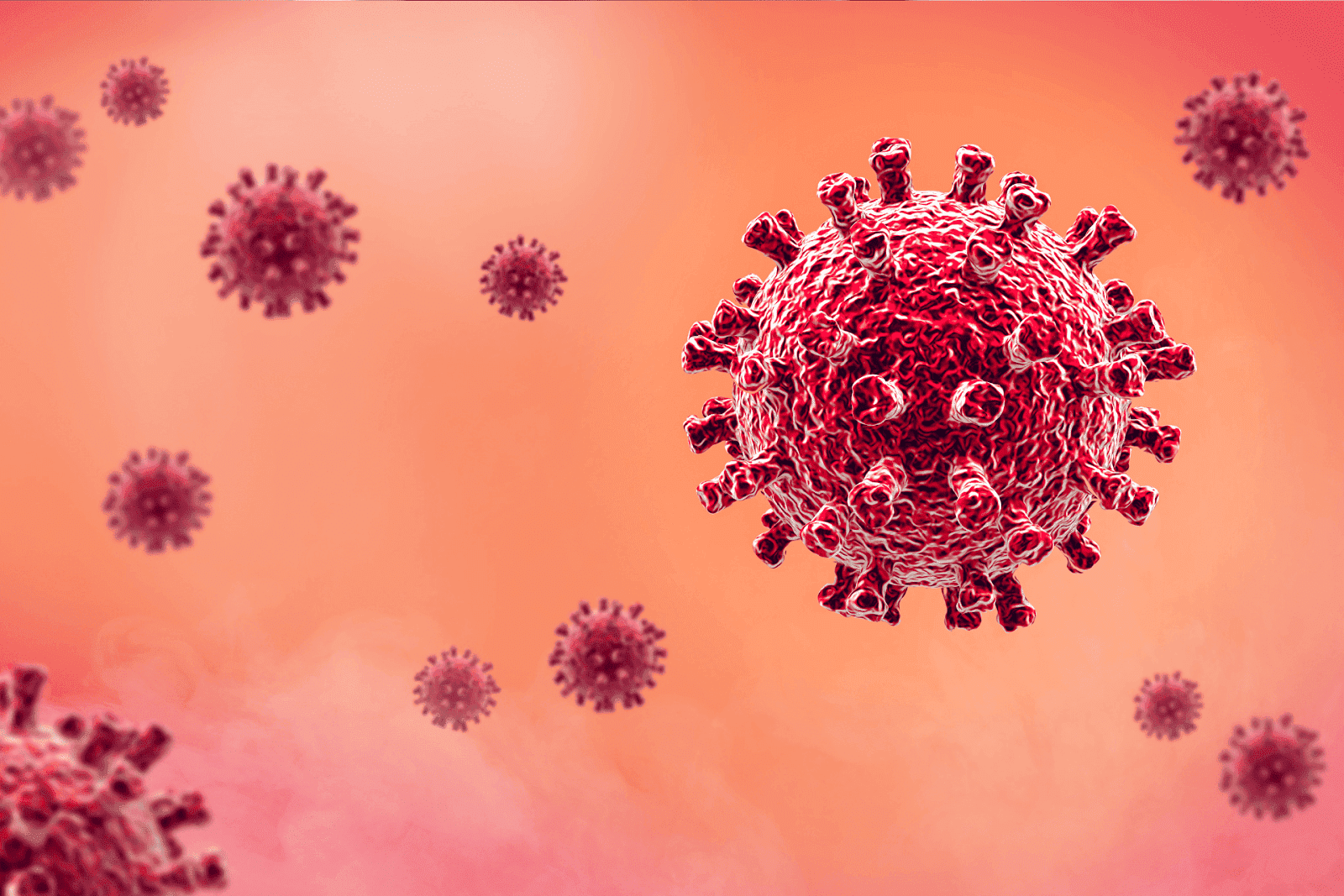Does Gabapentin Help with Sciatica?
Sciatica can cause sharp pain that shoots down your leg, making simple tasks hard. Many people wonder if gabapentin, a common medication, can ease this pain. This article [...]
Read More
Medically reviewed by Abhijit Bhattacharyya | MD, PhD, MBA, Tufts University School of Medicine - Miami, Florida on August 19th, 2025.
Feeling off and wondering whether it’s just a cold, an allergic reaction, or something more like an infection can be stressful. This guide outlines practical, evidence-informed steps to help determine the likelihood of an infection, identify its type, and guide next steps, including when to utilize telehealth services like Doctronic.ai for a quick assessment and informed decision-making.
Not every symptom requires a trip to urgent care. A thoughtful, systematic self-check helps prioritize care: it can prevent unnecessary ER visits, speed up treatment when needed, and give peace of mind when conservative measures are appropriate. Many infections respond quickly to early treatment, while others require monitoring to catch complications.
Access to rapid, reliable medical guidance is increasingly available. Doctronic.ai offers free AI-powered doctor visits and affordable telehealth video consultations with licensed clinicians 24/7 across all 50 states, which can be helpful after a self-check to get guidance tailored to the individual.
 Basic Signs That Suggest an Infection
Basic Signs That Suggest an InfectionThere are shared features across many types of infection. Look for the following systemic and localized clues.
These reflect the body’s overall response and include fever (generally >100.4°F / 38°C), chills, sweats, unexplained fatigue, muscle aches, and sometimes nausea or loss of appetite. When several of these occur together, an infectious process is more likely than a simple irritation or allergy.
Localized infections often present with redness, swelling, warmth, pain, discharge (pus), or an increasingly tender area. For example, a red, swollen finger that’s painful and warm is more likely an infected wound than a sprain.
How symptoms develop matters. Sudden onset over 24–48 hours often points to an acute infection or inflammatory process. Symptoms that wax and wane over weeks may reflect chronic infection, immune conditions, or noninfectious causes.
Different parts of the body show different patterns. Below are common infection categories and their typical presenting features to help narrow possibilities during a self-check.
Symptoms often start with a sore throat, nasal congestion, cough, and sometimes fever. Viral infections (cold, flu) usually cause body aches, clear or watery nasal discharge, and gradual improvement over several days. Bacterial infections like pneumonia may produce high fever, productive cough with colored sputum, shortness of breath, and chest pain that worsens with breathing.
Ear pain, pressure, muffled hearing, or drainage from the ear suggests otitis. Sinus infections usually cause facial pain/pressure, nasal congestion with thick, discolored discharge, and sometimes fever. Pain that’s one-sided or severe warrants closer attention.
Cellulitis or abscesses typically present as a painful, red, warm, swollen area. An isolated bump with pus may be an abscess and sometimes needs drainage. Rapidly spreading redness, streaking, or systemic symptoms should prompt urgent evaluation.
Typical symptoms include burning with urination, frequent urination, urgency, and sometimes lower abdominal discomfort. Fever, flank pain, or blood in the urine suggest possible spread to the kidneys and require prompt care.
Diarrhea, vomiting, abdominal cramping, and sometimes fever point to gastroenteritis. Severe dehydration, bloody stools, persistent high fever, or symptoms lasting longer than a few days are red flags.
Follow this structured checklist to get a clearer sense of whether symptoms suggest a mild illness that can be monitored at home, or something that needs professional care.
Write down what started first and how the symptoms changed. Note the onset (sudden vs gradual), peak severity, and any known exposures (sick contacts, recent travel, animal bites, or contaminated food). Also record chronic conditions (diabetes, immunosuppression), recent surgeries, or implanted devices, as these increase infection risk and change urgency.
Take the temperature if possible. Check heart rate and breathing rate (how fast and whether breathing is labored). If available, measure blood pressure and oxygen saturation. Low oxygen saturation (below 94% in many adults) or high fever plus rapid breathing/heart rate are concerning and may require urgent care.
Examine the area of concern with good lighting. For wounds, look for increasing redness, spreading warmth, discharge, or an expanding area of tenderness. For respiratory issues, observe for difficulty speaking due to breathlessness, bluish lips, or inability to clear secretions.
Ask whether symptoms interfere with everyday activities: inability to hold fluids, severe pain preventing movement, confusion, or inability to care for oneself are signs that immediate medical attention is needed.
Some findings go beyond home management and necessitate urgent in-person evaluation. Use these clear criteria to make quick decisions.
There is severe difficulty breathing, sudden chest pain, severe confusion or altered mental status, high fever with stiff neck and rash, severe uncontrolled bleeding, suspected stroke signs (facial droop, arm weakness, speech difficulty), or signs of severe sepsis (very low blood pressure, very fast heart rate, very high or low temperature, decreased urine output).
There is a fever in an infant, a persistent high fever not responding to antipyretics, symptoms that are rapidly worsening (spreading skin redness, rising breathlessness), severe localized pain, bloody or foul-smelling discharge, or possible kidney involvement with flank pain and fever. Telehealth can often triage and recommend in-person testing when needed.
Telehealth services are ideal after a structured self-check because clinicians can interpret findings, ask targeted follow-up questions, and decide whether testing or in-person care is necessary. For many non-emergency infections, a video visit can lead to timely treatment and guidance.
Doctronic combines AI-driven assessments with licensed clinician access, providing free AI doctor visits and affordable telehealth video visits for under $40, available 24/7 in all 50 states. These options can help determine whether antibiotics, tests, or urgent care are needed, and they make it simple to get a second opinion or follow-up care without leaving home. Visit Doctronic.ai to start an AI visit or book a clinician video visit.
Clinicians will ask about symptom onset, risk factors, and perform a visual inspection via video when applicable. They may recommend follow-up testing (rapid strep, urine test, chest x-ray) or prescribe medication when appropriate and safe. Telehealth cannot replace physical exams requiring palpation or procedures like abscess drainage; in those cases, referral to urgent care or the ED will be made.
Doctronic’s AI tools synthesize the latest peer-reviewed medical literature to deliver evidence-based answers quickly, then connect to clinicians when human judgment or prescription authority is needed. This model is particularly helpful for triage, follow-up questions, and second opinions.
 Home Care for Mild Infections While Monitoring
Home Care for Mild Infections While MonitoringFor mild infections without red flags, conservative measures can help with symptom relief and recovery. Keep monitoring for worsening signs.
Rest, adequate hydration, and nutrition support the immune system. Use over-the-counter antipyretics like acetaminophen or ibuprofen for fever and pain unless contraindicated. Humidifiers, saline nasal sprays, and throat lozenges often help with respiratory symptoms.
Clean minor wounds with soap and water, apply an antibiotic ointment, and cover with a sterile dressing. Monitor for increased redness, warmth, tenderness, spread of the lesion, or pus, any of which suggests a worsening infection requiring clinician evaluation.
Many common infections are viral and do not benefit from antibiotics. Unnecessary antibiotic use promotes resistance and adverse effects. A clinician or a telehealth visit can help decide whether antibiotics are indicated and, if so, choose the right agent and duration.
Reducing exposure and supporting immune health lowers infection risk. Practical habits make a meaningful difference.
Regular handwashing, safe food handling, and staying up to date with recommended vaccines (influenza, COVID-19 boosters, pneumococcal vaccines in indicated adults) are effective preventive measures. Vaccination remains a cornerstone for preventing severe disease.
Conditions like diabetes, heart disease, and immune compromise increase susceptibility to infections and complications. Optimal control of chronic diseases, regular medical follow-up, and prompt attention to minor infections are essential.
Keep a simple symptom log: start date, peak temperature, medications taken, and changes day-to-day. This record helps clinicians during telehealth or in-person visits and clarifies trends that influence treatment decisions.
If symptoms are improving within 48–72 hours with supportive care, continue monitoring. Worsening symptoms, new systemic signs, or failure to improve should prompt contact with a clinician via telehealth or an in-person visit.
Many people worry about antibiotic overuse, confusing viral and bacterial infections, and when to seek care. Clear answers help prevent both under-treatment and overtreatment.
Not necessarily. Most upper respiratory infections are viral and self-limited. Antibiotics are only appropriate when bacterial infection is likely or proven. Telehealth clinicians can often make that determination based on examination and history.
Observation is reasonable for many mild symptoms, but watch for red flags listed earlier. High-risk people (immunosuppressed, very young, elderly, or with chronic disease) should get earlier evaluation.
AI-driven tools and reputable telehealth platforms can provide reliable triage and information, but they are best used as part of a broader care plan that includes clinician oversight when indicated. Platforms that combine AI with clinician access offer the best of both speed and safety.
Look for services that provide evidence-based information, easy access to licensed clinicians, transparent pricing, and secure handling of health data. If a service offers both automated AI assessment and a pathway to clinician care, it can streamline triage and reduce unnecessary in-person visits.
Doctronic, headquartered in New York City, is one such platform. Its AI doctor offers free initial visits, draws on peer-reviewed medical research to synthesize up-to-date recommendations, remembers patients over time, and connects users to inexpensive ($<40) 24/7 video visits with licensed physicians across all 50 states. With over 10 million users, it’s designed to be fast, modern, and personal, especially useful after completing a self-check.
Use this short checklist to decide whether to monitor, book a telehealth visit, or seek immediate care:
Are there any red flags (severe breathlessness, chest pain, altered mental status, very high fever, signs of sepsis)? If yes, go to emergency care.
Is there moderate to severe localized concern (spreading skin infection, high fever, persistent vomiting, inability to drink/keep fluids)? If yes, please seek urgent same-day care or telehealth immediately.
Is the condition mild, improving, and without high-risk features? If yes, monitor at home, supportive care, and re-check in 24–72 hours.
Want a rapid evaluation or a prescription without leaving home? Use Doctronic.ai for an AI-guided visit and easy access to clinicians.
Reliable resources include the Centers for Disease Control and Prevention (CDC), local public health departments, and accredited telehealth platforms. For a fast, evidence-based initial assessment with the option to see a licensed clinician 24/7, consider using Doctronic’s AI doctor visit.
Recognizing an infection early and matching the response to the severity can shorten illness, reduce complications, and keep unnecessary visits to the emergency department to a minimum. A careful self-check, combined with telehealth when appropriate, offers a practical, modern approach to timely care.
If your self-check raises questions or you want a rapid, expert second opinion, try Doctronic, the #1 AI Doctor. Our AI visit is free, draws on the latest peer‑reviewed medicine, remembers your history, and can connect you to our licensed clinicians 24/7 for an inexpensive (under $40) video visit across all 50 states. Over 10 million people have used Doctronic to get faster, smarter, and more personal care. Skip the line. Talk to an AI Doctor Now, for free.
Sciatica can cause sharp pain that shoots down your leg, making simple tasks hard. Many people wonder if gabapentin, a common medication, can ease this pain. This article [...]
Read MoreBack pain is one of the most common health complaints, affecting millions of people worldwide. If you have back pain, you might have heard about gabapentin as a possible [...]
Read MoreIf you take gabapentin, you might wonder if it will show up on a drug test. This question matters for many people, whether it’s for work, sports, or legal reasons. Gabapentin [...]
Read More